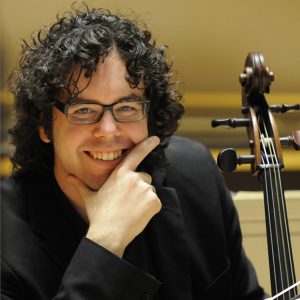
A Return to “What Makes a Baroque Cellist”: a Slight Digression about Textbooks (Part 2)
Guy Fishman
I ended last week’s post by qualifying the common sobriquet for the period between 1600 and 1750, “Baroque,” with a “so-called.” I didn’t mean to incite controversy, but I said “so-called Baroque period” because I meant just that. It is so called. It simply does not exist beyond us calling it so in textbooks and elsewhere. Or more accurately, we repeat some music critics’ derogatory epithet for music written during this time, an aspersion that can be found as early as 1753. The word is evidently based on the Portuguese word for “misshapen pearl.” Clearly to some, reading through a concerto of Vivaldi was comparable to risking one’s life by diving in search of a coveted calcite bead only to come up with a deformed and therefore worthless specimen.
I say “so-called” because I simply cannot get behind the proposed parameters, on either end. Could it be that just after midnight on January 1, 1600, some possibly inebriated chap opened the window to his room and, taking a moment away from his New Year’s celebration, yelled at the top of his lungs, “Hey, everybody, the Renaissance is over, we’re now in the Baroque period!?!?” If so I’d like to know his name, and why history has subjected him to total obscurity. And what of that other year, 1750? Yes, the Leipzig Bach died on July 28, but his no-less-baroque contemporaries George Frideric Handel, Domenico Scarlatti, and Georg Philipp Telemann outlived him by 9 and 7 years, respectively. Did they convert to classicism as soon as Bach expired?
Of course not, to both questions. Like all great creators, these composers acted on the creative impulse, which does not know the boundaries imposed by date and time. That impulse did not separate them from the inhabitants of the (so-called) period preceding their own—the Renaissance—or of that which followed, the Enlightenment. On the contrary, it united them. Undoubtedly there were different priorities, preferences, hugely generalized “rules” set down by well-meaning writers commenting on those musicians who broke these selfsame rules (after all, if everyone knew and followed the rules, why would you need to write them down?). But these great artists were also informed by their locale, their socio-economic and often familial circumstances, by religion, war, and politics. These influences cannot be quantified into a “period,” and certainly not into a “style,” because they occur at all times, in all places. In light of this, any attempt to bunch them into the artificial rigidity of a defined start- and end-date highlights the blaring fact that the “Baroque” in 1720s Rome was different than the “Baroque” of 1720s London, and of Madrid, and of Berlin, etc. Composers of the Roman Catholic tradition experienced the same “period” differently than Protestants, and court musicians lived different lives than those employed solely by the church; and so on.
These weren’t “Baroque” composers. They were just composers. And the players they knew and worked with weren’t “Baroque” musicians, but simply musicians. Their technique and their tools weren’t misshapen or in any way primitive, and their expressive devices were in no way lacking or limited. Although prominent cellists of the 19th (Romberg) and 20th (Alexanian) centuries claimed that those of the 17th and 18th century were under-developed by modern standards, could the ricercari of Gabrielli, the suites of Bach, and the concerti of Vivaldi, Boccherini, and C.P.E. Bach (written so soon after his father’s death that the cellists he knew may not have realized that the “baroque period” was supposed to have ended) have been written if no one could possibly play them well? If anything, a life during this 150-year “period,” so full of hardship and discomfort, in a world so dramatically larger than our own, where the only way to hear the sound of a cello was to play it or have it played for you, and when excellence meant your very survival, could only yield artists whose imagination and creativity might even have surpassed our own.
Where cellists are concerned—they weren’t even called “cellists” much before 1700—not a great deal can be pointed to that differentiates them from those of the 19th and even 20th centuries. What do we look at when we see a “baroque” cellist, his or her cello’s lack of an endpin? Gut strings? Sparse use of vibrato? All things that were found even after 1900. The bow was different, yes. The bridge – yes, different, although a “modern” bridge was made by G.B. Guarneri del Gesù in 1732. There are some differences in setup, to be sure. But using a baroque bow and a bridge of some exotic design doesn’t make a baroque cellist. Or maybe it’s just that it shouldn’t be expected to. What is all this about, anyway? I thought it was about the music….
Ultimately, I don’t want to hear a baroque cellist, nor a modern one for that matter. A great, well-rounded, dogma-free musician will do just fine. Read your textbooks, but remember their limitations. And imagine if you were able to meet Domenico Gabrielli or even his cellistic descendent, Luigi Boccherini. Would you call either a “baroque” cellist? He would certainly be insulted. His answer might be, “Me? Un violoncellista barocco? Ma io sono un suonatore…”
Subjects: Baroque, Historical
